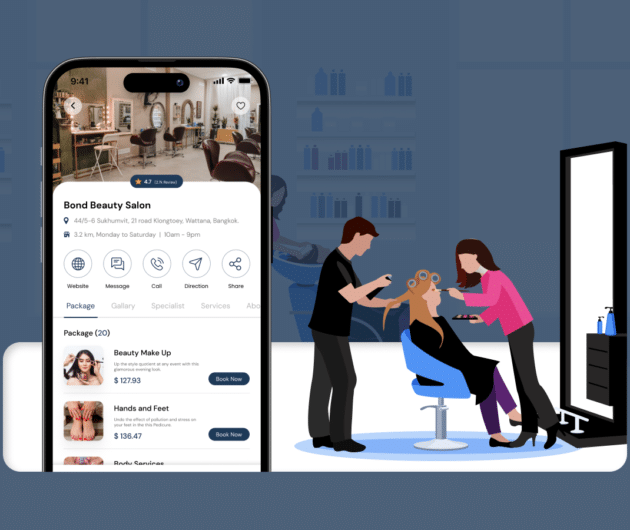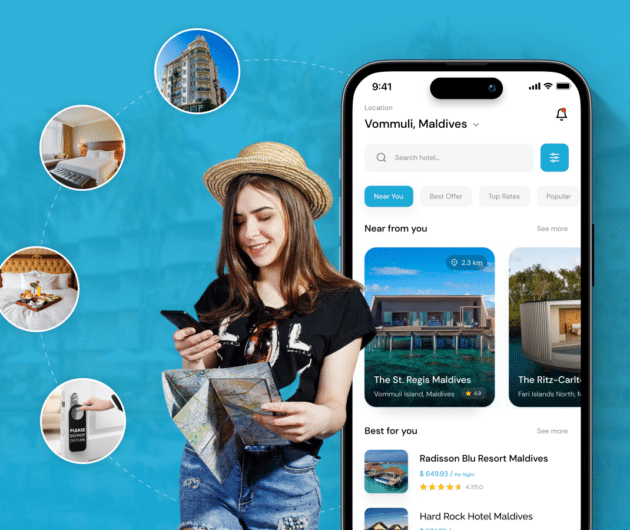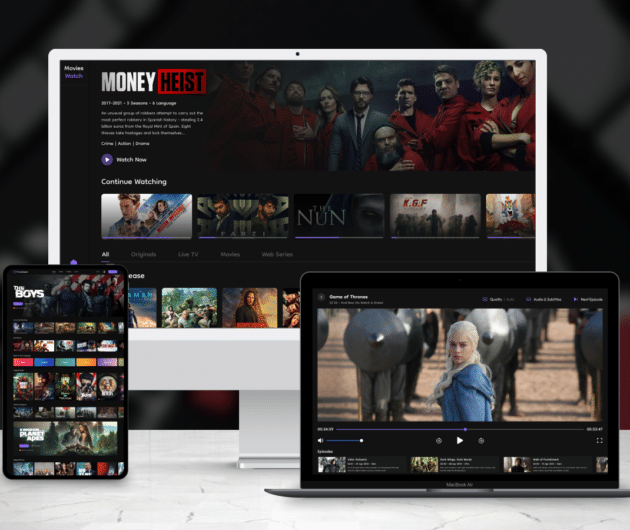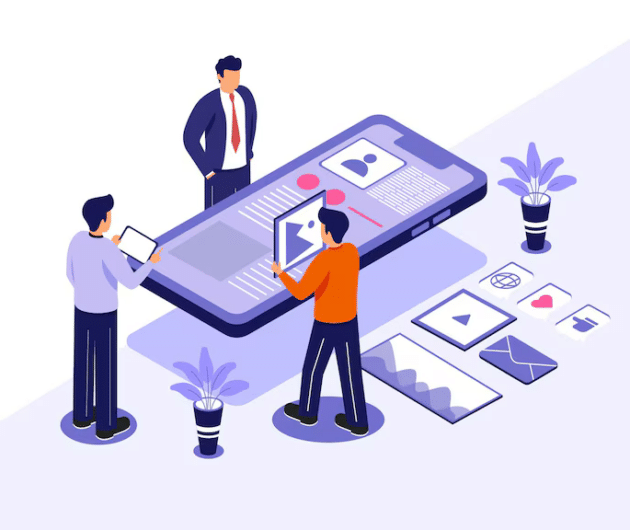Cost to Develop Music Streaming App for Astounding Success

-
Ankit Patel
- December 21, 2022
- 6 min read
Music streaming apps have changed the game when it comes to how we enjoy our favorite tunes. With millions of users tuning in daily, platforms like Spotify, Apple Music, and Amazon Music have become household names. They’ve not only made it easy to access songs but also introduced features like personalized playlists and high-quality audio, transforming our listening experience.
As we look ahead to 2025, the music streaming market is booming, and the demand for high-quality, user-friendly apps is at an all-time high. In fact, the global music streaming market was valued at $34.53 billion in 2022, and it’s expected to skyrocket to $103.07 billion by 2030. This growth opens the door for new players eager to carve out their niche.
If you’re considering launching a music application in 2025, understanding the costs involved is key. With technology rapidly advancing and user preferences constantly shifting, you’ll need to plan wisely to build an app that really stands out. In this article, we’ll dive into what factors influence the cost of developing a music streaming app and discuss the trends that will shape the future of this exciting industry.
Global Music Streaming Market
- As of 2023, there are over 1.5 billion active music streaming subscribers worldwide.
- Spotify dominates the market with a 31% share, boasting over 615 million users and 246 million subscribers.
- Apple Music is the second largest player, holding a market share of approximately 17%.
- Other major players include Amazon Music, Tencent Music, Deezer, Pandora, YouTube Music, and Tidal.
- North America and Europe are the largest music streaming markets in terms of revenue.
- Middle East and Africa are expected to emerge as the fastest-growing regions.
Why Are Music Streaming Apps Becoming Popular?
Music streaming apps are growing in popularity for several key reasons:
- Convenience: Users can access millions of songs anytime, anywhere, without needing to download them.
- Personalization: Advanced algorithms suggest songs based on listening habits, making the experience more tailored.
- Affordability: Subscriptions provide access to large music libraries at low monthly costs, with free, ad-supported options as well.
- Offline Listening: Many apps allow users to download songs and listen offline, even without an internet connection.
- Integration with Devices: Streaming apps work seamlessly with smartphones, smart speakers, and wearables, making them easy to use across multiple devices.
- Exclusive Content: Some apps offer exclusive music, podcasts, and special content that keeps users engaged.
Different Categories of Music Streaming App
Check out the different categories for music streaming apps:

- Server-based music library that provides users with music that is free or through paid subscriptions, alongside the flexibility of playlist creation, and so on.
- Radio station to support users listening to music as per their listening preferences. This includes songs currently in trend.
- Cloud storage where users can download and store their favorite tracks over the cloud platform and stream it later.
Popular Music Streaming Apps
Here are the popular music streaming apps that we have brought for you.

- Spotify
- Apple Music
- Amazon Music
- Pandora
- Tidal
How Do These Apps Make Money?
Let’s gain insight into the revenue models that music streaming apps incorporate in order to boost their profits.

- Advertisements where apps make money through the freemium services they provide. Thereafter, in case of users wish to avoid watching them, they need to avail of premium service.
- Subscriptions where the business earns profits through the subscription offer availed by the user which can be monthly or yearly.
- Promotions where artists get the flexibility to promote their songs through the creation of a campaign. Thereafter based on the nature of the campaign created, they are charged an amount.
Features to Include in Music Streaming App
When you are embarking on the journey of music streaming app development in 2025, it is crucial that you make your solution stand out in the crowd. Hence, it is recommended that you include features that are unique.
Here are the essential features whose inclusion will particularly make the task streamlined.
• Login & Registration
Users should be able to easily create an account and log in to the app. This can be done through email, phone number, or social media accounts. A simple and quick registration process helps users get started without any hassle.
• User Profile
Each user should have a personal profile where they can customize their information. This profile can include their favorite artists, songs, and playlists. It helps users feel more connected to the app.
• Search
A powerful search feature allows users to find their favorite songs, artists, or albums quickly. Users should be able to search using keywords or phrases, making it easy to discover specific music.
• Music Player
The music player is the heart of the app. It should have basic controls like play, pause, skip, and rewind. Additionally, features like shuffle and repeat enhance the listening experience.
• User’s Library
Users should have a personal library where they can access all their saved music, including downloaded songs and playlists. This makes it convenient for them to find their favorite tracks.
• Discover Music
A discovery feature helps users find new music. This can include curated playlists, trending songs, or recommendations based on their listening history, encouraging users to explore more content.
• AI-based Personalized Recommendations
Using artificial intelligence, the app can suggest music based on users’ listening habits. This feature helps users discover new songs and artists they might like, making their experience more enjoyable.
• Artist & Album Profiles
Each artist and album should have its own profile page. This can include information about the artist, their biography, discography, and upcoming events. It gives users a deeper understanding of the music they love.
• Create Playlist
Users should have the option to create their own playlists. This feature allows them to organize their favorite songs for different occasions, such as workouts, parties, or relaxing times.
• Payments Integration
If the app offers premium features or subscriptions, there should be a secure payment system. Users should be able to easily manage their subscriptions and payments within the app.
• Offline Mode
An offline mode allows users to download their favorite songs and listen to them without an internet connection. This is especially useful for users who want to enjoy music while traveling or in areas with poor connectivity.
• Push Notifications
Push notifications keep users updated on new music releases, updates, and personalized recommendations. By providing timely alerts, they encourage users to stay engaged and explore new content regularly.
• Social Sharing
Users should be able to share their favorite songs and playlists on social media platforms. This feature helps create a community around the app and allows users to share their music tastes with friends.
Technoogy Stack Require to Build a Music App
With the support of robust technologies used in building a music streaming app like Spotify, your final solution will operate seamlessly, without any significant roadblocks.
- For Android – Kotlin or Java
- For iOS – Swift
- For Frontend – React, Java, Angular, CSS, HTML
- For Backend – Node.JS, Express.JS, Python
- Payment Processing – PayPal, Stripe, Braintree, EWallets
- For Server – AWS
- Push Notifications and in-app messaging – Twilio, Push.io
- For Database – MongoDB, HBase, Postgres

Factors That Affect the Cost of Developing a Music Streaming App
The cost of building a music app depends on several factors, each of which contributes to the overall budget. Here are the key areas to consider when estimating the cost:
• Platform Selection
One of the first decisions to make is whether the app will be developed for Android, iOS, or both platforms. Developing for a single platform is more affordable but limits your audience reach, whereas a cross-platform app requires a larger investment but allows you to reach a wider user base. Using cross-platform frameworks, like React Native, can save some costs, but each approach has different price implications based on the app’s complexity.
• Design and User Interface
A simple, clean design is more affordable, while custom designs with interactive features increase costs. Investing in a well-designed user interface boosts user engagement, but costs vary depending on complexity.
• Features and Functionalities
The number of features and their complexity are major cost drivers. Basic features like user registration, profile creation, and playlist management are essential. However, more advanced features, such as personalized music recommendations, offline playback, and social media integration, will increase development costs.
• Music Licensing
Obtaining the rights to stream music is one of the most significant ongoing expenses for any music streaming app. Licensing agreements with record labels or artists can vary widely in cost, depending on the size of your music library and the agreements you make. Typically, you will need to pay royalties, either as a fixed fee or as a percentage of your app’s revenue.
• Development Team or Outsourcing
The cost of hiring a development team will vary depending on their location and expertise. If you hire an in-house team, you’ll need developers, designers, and project managers, which can be expensive, especially in regions like the US, Western Europe, or Australia. Alternatively, outsourcing app development to regions with lower costs, such as Eastern Europe or South Asia, can be more budget-friendly while still offering high-quality services.
Estimated Cost to Develop a Music Streaming App
Determining the exact cost of developing a music streaming app can be tricky without knowing your specific needs. However, here’s a general idea:
- For a basic app featuring core functionalities, you can expect costs to range from $15,000 to $30,000.
- For a more advanced app that includes features like AI-driven recommendations, the cost can rise to $40,000 to $60,000 or more.
If this budget feels too high for you, consider exploring white-label solutions. These readymade music applications are available at more affordable rates and can be customized to meet your specific requirements.
Summing up
The music streaming industry is a lucrative and profitable industry having billion-dollar prospects. Hence, stepping into it by developing a custom music app is key. Research the needs of your target market beforehand. Once you are sure that you have the desired proficiency to go ahead, you can connect with us. We will partner with you in the journey to develop a successful music streaming app within your stipulated budget so that you can gain a competitive edge in the music streaming market and earn revenues like never before.
You may also like

How to Choose the Right Mobile App Development Company
-
Ankit Patel
Imagine this: you’ve got a brilliant app idea that could revolutionize your business, take it to new heights, and transform your entire customer experience. But without the right team to… Read More

How Much Does it Cost to Build a Salon Booking App like Fresha?
-
Ankit Patel
We all have witnessed the buzz in the world of beauty & wellness, and it’s booming every day thanks to the fast-paced and stressful lifestyle. In an era where time… Read More

A Complete Guide to Hotel Booking App Development With Cost
-
Ankit Patel
Whether it’s a corporate business trip or a relaxing vacation with friends, finding the right hotel at the right time and a seamless hotel booking experience is not a luxury… Read More





